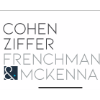Insurance Litigation 2025
USA – New York
Trends and Developments
Introduction
In a year marked by notable judicial activity, 2025 has seen several important legal decisions shape the landscape of insurance law in New York. These rulings have addressed a range of critical issues – from settlements that assign rights to insurance to disputes over relatedness of actions. This update summarises some of the most impactful decisions handed down by New York courts in 2025, offering insight into how these developments may influence insurers, policyholders and legal practitioners moving forward.
New York Courts Continue To Endorse Settlements Assigning Insurance Rights With Covenants Not To Execute
One recurring issue in insurance law is whether a policyholder may assign its coverage rights to a third party as part of a settlement in which the third party agrees not to execute a judgment, without defeating the policy’s “legally obligated to pay” requirement. Jurisdictions are split: the minority view holds that a covenant not to execute negates the insured’s legal obligation, barring coverage – see, eg, Freeman v Schmidt Real Est. & Ins., Inc., 755 F.2d 135, 138–39 (8th Cir. 1985) (applying Iowa law).
Traditionally, New York courts have followed the majority rule. In Westchester Fire Insurance Co. v Utica First Insurance Co., 40 A.D.3d 978 (N.Y. App. Div. 2nd Dep’t 2007), the court held that liability was fixed upon settlement, even though the claimant agreed not to execute against the insured. Federal courts in New York have applied the same principle – see, eg, Intelligent Digital Sys., LLC v Beazley Ins. Co., Inc., 207 F. Supp. 3d 242, 247 (E.D.N.Y. 2016); and Illinois Union Ins. Co. v US Bus Charter & Limo Inc., 291 F. Supp. 3d 286, 292–93 (E.D.N.Y. 2018).
Most recently, in Geiger v Hudson Excess Ins. Co., 2025 WL 2248666 (N.Y. App. Div. 1st Dep’t Aug. 7, 2025), the First Department reaffirmed New York’s adherence to the majority view. In Geiger, the underlying plaintiffs sued a nightclub alleging that the club “improperly and knowingly used their images and likenesses in advertising without their consent and without payment”. Id. at *1. The underlying parties then entered into a settlement agreement and consent judgment with a covenant not to execute on the judgment, pursuant to which the club “assigned to plaintiffs its right to prosecute its coverage claims against [its insurers] to recover the amount of the judgment and defense costs”. Id.
After discussing New York precedent and the majority and minority views, the First Department concluded that the “majority view represents the sounder position” and added: “It is not difficult to find justification for the prevailing view when we consider that any scenario wherein an insured is assigning its claims against its insurer to a plaintiff, in exchange for a covenant not to execute, necessarily takes place when the insured has been abandoned by its insurer. In New York, an insurer that breaches its duty to defend a claim for loss that is covered under its policy will be held liable for the insured’s reasonable settlement of that claim, regardless of whether the insurer consented to such settlement”. Id. at *5. Accordingly, the policyholder is “justified in taking affirmative steps to limit its own liability by assigning its claims against its insurer to the plaintiff in exchange for a covenant not to execute on the consented to judgment, as long as the insured has acted reasonably and in good faith”. Id. The court emphasised that such assignments typically arise when an insurer wrongfully refuses to defend. In those circumstances, it held, the insured may reasonably assign its rights in exchange for a covenant not to execute, without defeating coverage.
First Department Clarifies “Relatedness” in Employment Practices Claims
In Zurich American Insurance Co. v Giorgio Armani Corp., 238 A.D.3d 81 (N.Y. App. Div. 1st Dep’t Mar. 11, 2025), the First Department clarified the “relatedness” standard that should be used in connection with employment practices liability (EPL) policies.
Hiscox provided EPL coverage for the period covering August 2017 to August 2018, and Zurich provided EPL coverage from August 2018 to August 2019. Both policies contained standard language stating that “related” or “interrelated” wrongful acts – defined as acts sharing a common nexus or nucleus of facts – would be treated as a single claim first made when the earliest related claim was filed.
Giorgio Armani involved three employment-related claims tied to sexual misconduct allegations against an Armani employee, Javier Herrera, at its Seattle, Washington stores. Specifically, between 2018 and 2019, Armani reported these matters to its insurers; Armani reported the Loreto-Hays and Oberloh US Equal Employment Opportunity Commission (EEOC) charges to Hiscox, and it reported the later Christin lawsuit – brought by five female plaintiffs – to Zurich. Zurich denied coverage, asserting that Christin was interrelated with the earlier claims and thus deemed first made during the Hiscox policy period.
The trial court found the Christin allegations too factually distinct to be interrelated, holding Zurich liable. It emphasised that while all claims involved Mr Herrera and Armani’s failure to act, the specific allegations in each case – different victims, timelines and workplace dynamics – lacked a sufficient causal connection.
On appeal, however, the First Department reversed. It held that all three claims arose from a “common nexus of facts”: Mr Herrera’s repeated misconduct and Armani’s alleged inaction. The court rejected the lower court’s reliance on Roman Catholic Diocese of Brooklyn v National Union Fire Insurance Co. of Pittsburgh, PA, 21 N.Y.3d 139 (2013), noting that that case addressed whether incidents were part of the same occurrence for policy limits purposes – not whether they were “related” under a claims-made framework. The court emphasised that the policies’ relatedness language required only a shared factual nucleus or causal connection – not identical conduct, victims or harms.
Critically, the First Department clarified that under New York law, “arising out of” means originating from or having some connection with the alleged conduct. Because the Christin action stemmed from the same alleged misconduct and management failures as the earlier claims, it was both a Related Wrongful Act under the Hiscox policy and an Interrelated Wrongful Act under the Zurich policy. As a result, it was deemed first made during the Hiscox period, and Zurich owed no coverage.
The decision underscores the importance of policy language in relatedness analyses and affirms New York’s broad interpretation of “common nexus” provisions in the EPL context.
Second Circuit Affirms That Declaratory Judgment Is Appropriate on the Duty To Indemnify Where There Is a Finding Of Proximate Cause
Insurers and policyholders often seek declaratory judgments to clarify their respective duties to defend and indemnify before liability in an underlying lawsuit has been fixed. However, a recent federal case highlights a significant divergence between New York’s federal and state courts on when such declarations are appropriate.
In Liberty Insurance Corp. v New York Marine & General Insurance Co., 2023 WL 2597053 (S.D.N.Y. Mar. 22, 2023), aff’d in part, rev’d in part sub nom. Liberty Insurance Corp. v Hudson Excess Insurance Co., 2025 WL 2325902 (2nd Cir. Aug. 13, 2025), the federal district court held that a subcontractor’s insurer (Hudson) was obligated to indemnify a property owner for injuries sustained by the subcontractor’s employee – despite the fact that the subcontractor’s liability had not yet been established in the underlying state court action.
The district court found that the subcontractor’s acts were a proximate cause of the injury, satisfying the conditions of the additional insured endorsement in Hudson’s policy. In August 2025, the Second Circuit affirmed, reasoning that a federal court may enter a declaratory judgment on indemnity if proximate cause is established, even if a subsequent state court ruling later undermines the contractual indemnity claim.
This approach contrasts with the refusals of various New York state courts to issue declaratory judgments on indemnification unless:
- the underlying action is resolved;
- the issue will not be addressed there; or
- the issue can be resolved purely as a matter of law – see, eg, Ace Am. Ins. Co. v Consol. Edison Co., 228 A.D.3d 552 (N.Y. App. Div. 1st Dep’t 2024); Harleysville Ins. Co. v United Fire Prot., Inc., 227 A.D.3d 499 (N.Y. App. Div. 1st Dep’t 2024).
The case illustrates how federal courts applying New York law may take a more flexible approach in declaratory judgment actions, particularly in finding proximate cause to support indemnity obligations – even before underlying liability is determined. This distinction has important implications for litigants seeking early resolution of insurance coverage disputes to facilitate settlement.
Discovery in Bad Faith Cases
Policyholders and insurers often battle over the discoverability of reserve and reinsurance information and documentation and claims-handling documents withheld by insurers on the basis of privilege. In Mandarin Oriental, Inc. v HDI Global Insurance Co., 2025 WL 1638071 (S.D.N.Y. June 10, 2025), the district court compelled production of reserve information, reinsurance communications and other claim file materials in a COVID-19 business interruption case, finding them relevant to the policyholder’s bad faith claim and not protected by privilege.
Mandarin Oriental sought coverage under an all-risk policy for pandemic-related business interruption losses at its hotels. The insurers engaged adjusters, forensic accountants and outside counsel to assess the claims, but withheld seemingly key documents in discovery. Mandarin moved to compel, and the court conducted an in camera review of exemplar documents.
Following this review, the court ruled as follows.
- Reinsurance communications were discoverable, as they could reflect the insurers’ internal coverage evaluations, which were central to the bad faith claim.
- Reserve information was likewise relevant. The court rejected the insurers’ argument that reserves merely reflect litigation risk, indicating their potential to show how insurers assessed liability.
- The insurers’ privilege objections failed. Most documents predated litigation by over one year and were created in the ordinary course of business. Routine claims handling – even when involving outside counsel – did not qualify for attorney-client or work product protection, especially where third-party information was involved.
The court offered specific guidance, as follows:
- emails forwarding non-confidential or third-party information to counsel are not privileged;
- claim evaluations and routine internal communications are not protected work product; and
- only documents genuinely reflecting legal advice qualify for privilege.
Mandarin Oriental reinforces that, under New York law, courts will compel production of claims materials in bad faith cases unless insurers can clearly establish that documents were created in anticipation of litigation or reflect actual legal advice.
Insured Directors and Officers Win an Arbitration Provision Dispute in Bankruptcy Proceedings
In In re Orion HealthCorp, Inc., 2025 WL 1129201 (2nd Cir. Apr. 15, 2025) (summary order), the Second Circuit affirmed a judgment of the US District Court for the Eastern District of New York, which had affirmed an order of the US Bankruptcy Court for the Eastern District of New York denying an insurer’s motion to compel arbitration between the insurer and insured directors and officers (D&Os).
In 2018, Constellation Healthcare Technology, Inc (CHT) and Orion HealthCorp, Inc (Orion), a direct subsidiary of CHT, filed for Chapter 11 bankruptcy. The Bankruptcy Court subsequently approved a consolidated plan of liquidation and named a liquidating trustee. Together, CHT and the trustee then commenced adversary proceedings against certain CHT and Orion D&Os who, in a settlement agreement with the trustee, assigned their rights to insurance coverage to the trustee.
Allied World National Assurance Company issued the subject policy, an excess policy that adopted the underlying primary policy’s arbitration provision as well as its definition of the “policyholder” as CHT. The arbitration provision stated that it governed disputes regarding the policy “between the insurer and the policyholder”. Id. at *1.
After being assigned the insureds’ rights, the trustee sued Allied World for defence costs and indemnification coverage owed to the D&Os under the Allied World policy for the earlier CHT and trustee proceeding against the D&Os. Allied World then filed a motion to compel, which the Bankruptcy Court denied, a denial upheld by the District Court and Second Circuit.
Applying New York law, the Second Circuit found that the underlying action was entirely against the D&Os. Id. at *2. Thus, because the D&Os were defined as “insureds” in the policy, whereas CHT was defined as the “policyholder”, the arbitration provision did not apply to the D&Os or, by extension, the trustee who stood in their shoes as an assignee. Id. The court also held that the result is no different when considering the D&Os (and the trustee) as third-party beneficiaries because the obligation to arbitrate is a creature of contract, and the D&Os did not contract with Allied World to arbitrate their dispute – CHT did. Finally, the Second Circuit held that estoppel also did not apply because, “although the directors and officers seek benefits under the Allied World Policy, they have not ‘assumed performance’ of the Allied World Policy in the place of the policyholder”. Id.
This case is noteworthy in that multiple issues affected the determination of potential coverage, including the interplay between primary and excess policies, the enforceability of arbitration provisions, the effect of settlement agreements assigning rights to insurance coverage, and the varying rights and obligations of insured entities and D&Os in bankruptcy proceedings.
Cohen Ziffer Frenchman & McKenna LLP
1325 Avenue of the Americas
New York
NY 10019
USA
+1 212 584 1890
+1 212 584 1891
contact@cohenziffer.com www.cohenziffer.com/




